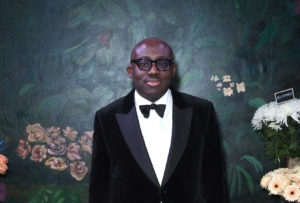It’s an idyllic Friday in Spring and I am standing on the factory floor of a silk factory in the heart of Suffolk. Guiding me through this labyrinth of looms is Julius Walters, the 11th-generation Managing Director of Sudbury Silk Mills, a world-leading purveyor of fine silks to both fashion and literal royalty. “Our customers are focused on doing things exceptionally and beautifully,” Walters tells me over the thrum of his weavers. “It’s part of their philosophy to buy the very best materials — and they view us as the epitome of the best.”
This passion for excellence over exuberant attention-seeking mirrors the wider British luxury industry. Unlike France and Italy, we lack iconic listed luxury growth engines. There is no British Louis Vuitton-Moet Hennessy (£285 billion market cap) or Ferrari (£71 billion). Our greatest champions of Burberry (£2.4 billion) and InterContinental Hotels Group (£12 billion) languish at the bottom of the FTSE 100.
Of course, Britain is still a playground to the wealthy. As Butler to the World, we serve the globally rich with private schools, real estate, and a historically handy tax regime. Savile Row and Jermyn Street are luminaries of menswear. Our luxury automotive industry remains iconic, albeit foreign-owned. However, our disdain for poor taste and glitzy tat prevented us from becoming a gigafactory of shallow status symbols. Unlike our continental counterparts, we have failed to feast on the desires of the growing hordes of global affluence.
But what if this snobbishness was a well-placed long-term bet? Over the past two years, I have been conducting anthropological research into the lives and desires of ultra and high-net-worth individuals — or “(U)HNWIs” to the brands and banks that seek their riches. From Manhattan and Monaco to Singapore and Seoul, I have found that the aspirations of the global rich are undergoing a subtle but tectonic shift. The superficial brand mythologies and logos that have fuelled much of the European luxury boom are fast falling out of fashion.
Instead, these HNWIs are embracing deeper forms of luxury, rooted in a different set of values. They are increasingly rejecting the obvious and explicit badges, instead preferring more subtle, meaningful, and nuanced forms of distinction. “I used to spend lavishly on clothes, mostly buying major French and Italian labels,” explains Bao, a venture capitalist based in Guanghzhou, China. “Now, I spend more pragmatically. I buy less and focus on quality, long-lasting items. It should have its own special story and design, not just a logo.”
Among the global new elite, there is a feeling that not only are conventional status symbols no longer markers of distinction, but they also fail to satisfy deeper emotional needs. “There’s a sense of emptiness, of just consuming things, because they’re showy, or they’re pretty and you get that kind of consumer lust for them that you want to sate,” explains Nadia, a jet-set entrepreneur living between Dubai and Monaco. “It has an emptiness that a new handbag won’t fill.”
None of which is to say that the rich no longer care about status. Quite the opposite: expressing “status” is now increasingly about conscious virtue rather than chest-beating dominance. To these HNWIs, distinction is not about having the shiniest watch, but signalling an appreciation of craftsmanship, community, patronage and planet.
What’s driving this shift? First, the sheer scale and growth of HNWIs is galactic, and the wealthy need new ways to distinguish themselves. UBS’s 2024 Global Wealth Report estimates there are currently 59.4 million millionaires globally. That number is expected to grow to 86 million by 2027. In a slightly more exclusive tier, there are 243,000 ultra-high-net-worths — those with over $50 million. This cohort of living gods is projected to rise to 372,000 by 2027.
In his Theory of the Leisure Class (1899), Thorstein Veblen argued that luxury is essentially a symbolic social performance where the excess time and wealth of the rich are displayed through unnecessary, conspicuous consumption. Yet, in a world where 100,000 millionaires are born every week, signalling that distinction has become harder. Behind these astronomical numbers and opaque acronyms, the reality is that owning a Rolex does not set you apart. Being rich isn’t rare anymore.
To further distinguish themselves in a crowded elite world, HNWIs are embracing what Giana M. Eckhardt et al. call “inconspicuous consumption”. This holds that, amid the flash and the fakes, true distinction now comes from signalling to their in-the-know micro-peers groups. The masses are now cottoning on with the Succession-inspired #quietluxury TikTok trend garnering half a billion views. While online mainstream interest in the trend might have dipped slightly since its zenith in 2023, it still represents a paradigm shift. Over the past 12 months, the stock market value of quiet luxury’s poster children Brunello Cuccinelli (+21%) and Hermès (+15%) far outstrips the now shrinking LVMH (-13%).
Related to this, the global rich are also increasingly mindful of impact of their spending. Endless studies indicate that younger luxury consumers seek sustainability. By 2030, the wealthy youth will make up 80% of the global luxury consumer base. “These younger consumers are more interested in the ethical aspects and the stories behind the products than older generations,” explains Helen Chislett, co-author of Craft Britain: Why Making Matters. In this new landscape, the ethical origin is no longer a side perk but essential to the foundations of the luxury myth. As Chislett explains in a distinctly Carolean tone: “They now seek products that tell a story, with authenticity and a clear lineage. This isn’t just about luxury; it’s about connection and understanding the provenance of the things we bring into our lives.”
Which brings us back to Britain. In this shifting cultural environment, many of France and Italy’s maisons have sold out the quality and authenticity to fatten themselves on the fruits of globalisation. Britain’s luxury artisans, by contrast, stood their ground. Save for the prodigal Burberry’s years in the wilderness, the local industry has consistently maintained its reputation for sustaining a tradition of tasteful craftsmanship, understated timeless design and ethical leadership. As the nouveau riche reach their era of maturity, Britain can feast on the Europeans’ lunch.
In her introduction to Walpole’s 2024 British Book of Luxury, CEO Helen Brocklebank emphasises Britain’s unique opportunity. “All the elements for success are there,” she writes, “a growing market, a new generation of young, savvy consumers, and a shift in what luxury means towards qualities and values where Britain has always excelled.”
And yet, few in Britain seem to care. Parliament endlessly debates the importance of building Tech Britain, which certainly makes some sense: the tech sector contributes £150 billion to our annual GDP. However, the luxury sector, despite contributing £81 billion annually, supporting 450,000 jobs, and paying in £25.5 billion to the exchequer, is almost never discussed by politicians. Apart from stopping Russian oligarchs from buying luxury cars — they get them via Azerbaijan now — and occasional attempts to bring back VAT-free shopping, the British luxury is hardly on the political agenda.
Why ignore this engine of growth? Most likely, it is seen as frivolous. As Brocklebank writes: “Luxury brands create some of the most beautiful, exclusive, and desirable products on the Earth and yet our industry is rarely seen as serious… [It is seen as] indulgent, transient and nonessential.” More cynically, it’s likely that pseudo-salt-of-the-Earth politicians seek to avoid association with a sector they perceive as intrinsically serving the rich and powerful. When Prime Minister Keir Starmer explained last week that “those with the broadest shoulders should bear the heavier burden”, he obviously only meant taxes. Actively persuading the rich to volunteer their cash through craft and charm is nowhere near the agenda.
Elite commentators often reflect this myopia. Writing in The Financial Times, Janan Ganesh recently suggested that luxury is “Europe’s joke on the world” and “profits from the cultural insecurities of other regions”. While he accepts that these businesses pay taxes and employ people, he critiques the supposed “ghastliness of the products” and international consumers’ “postcolonial urge to ‘mimic’ the metropole”. But what if, rather than being merely a job and tax revenue creating “joke”, the luxury sector is something deeply good for both the economy and the spirit of the nation?
In her four-part review of Kenneth and Gillian Bartlett’s The Renaissance in Italy, Angela Nagle explores the historical realities of an industrial policy that celebrates luxury and beauty. Focusing on the glass-blowing industry, Nagle argues that “the first lesson of Venice is that industry and beauty are not incompatible, as some sentimentalists believe, but can be entirely complementary. This is especially true if you choose to invest in producing luxury or high-quality goods and take pride in their quality.”
This is just as potent a force in Renaissance Venice as it is in 21st-century Sudbury. Employees across the silk mill beamed with glee at the splendour of their businesses. Even beyond the creatives, this pride resonates. “I used do accounting at a sock business, we were just making black socks all the time, you wouldn’t feel the same investment in that,” says one woman in the silk mill’s finance department. “But here there’s a lot of pride that goes into what we do, because we’re always creating something different.”
Her colleague continues: “We make high end fabrics, for absolutely everybody. It’s not an off-the-shelf process — it’s a collaboration of all the people that want to make something very special. From start to finish, everyone is involved, and when we see some of our fabrics on TV or in a magazine, we all think ‘I’ve got a piece of me in that’. Everyone feels connected when we produce a finished product.”
In this, we find a vision of British industry that is truly inspiring. In stark contrast to the soulless WeWorks of London, where dead-eyed graduates, over-qualified and under-skilled, waste away their twenties selling B2B software subscriptions, we encounter a vibrant, joyful community of art and commerce. Here, highly skilled creatives, manufacturers, and professionals work seamlessly together, united by their shared admiration for the craftsmanship of a truly exquisite product.
In 18th-century Britain, there was a deep pride in luxury craft. In a 2023 essay Fired by Creativity, Tristram Hunt, Director of the V&A and former Labour MP, delved into the epoch-defining impact of Josiah Wedgwood — porcelain industrialist extraordinaire. In Wedgwood’s time, Hunt explains, there was no embarrassment in celebrating the merits of high-end craftsmanship. On the contrary, the intertwined economic and cultural significance of openly supporting and taking pride in one’s luxury industry was regarded as a noble pursuit. As Hunt puts it: “There was nobility and virtue in seducing the buyer, in pleasing the consumer, and in expanding the provision of material goods” to sustain the region’s thriving industries. Quoting Prime Minister William Gladstone, Hunt further emphasises that “Wedgwood was the greatest man who ever, in any age, or in any country…[who] applied himself to the important work of uniting art with industry.”
In an era where the winds of luxury are once again turning in Britain’s favour, we could do worse than reanimate Wedgwood’s spirit. And there are endless policy reforms that would unleash British luxury — from reinstating tax-free shopping and making exports easier to protecting IP rights and apprenticeship reforms. First, however, we must renew a sense of pride. Once that’s achieved, we will still be a long way from Making Britain Cool Again. Perhaps, in the meantime, we can make it craft again.
Disclaimer
Some of the posts we share are controversial and we do not necessarily agree with them in the whole extend. Sometimes we agree with the content or part of it but we do not agree with the narration or language. Nevertheless we find them somehow interesting, valuable and/or informative or we share them, because we strongly believe in freedom of speech, free press and journalism. We strongly encourage you to have a critical approach to all the content, do your own research and analysis to build your own opinion.
We would be glad to have your feedback.
Source: UnHerd Read the original article here: https://unherd.com/




